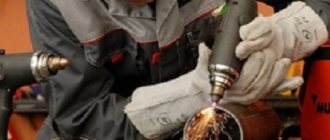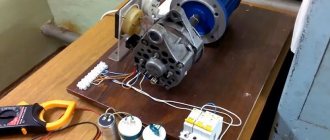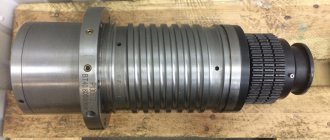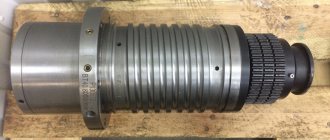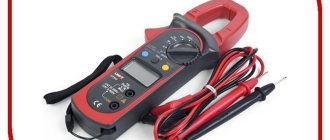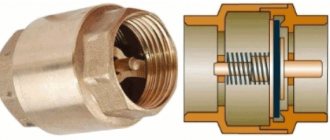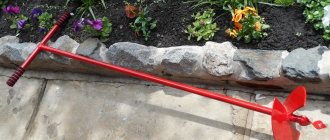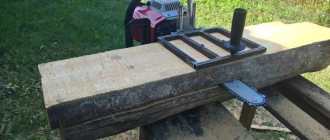Main parts of theodolite
The device allows you to measure angles in space with high accuracy and work in a horizontal or vertical plane. As a rule, a relative method is chosen, when a reference object is taken as a basis, and the desired angle is already calculated from it. Measuring in this way has been known since the 19th century, but today's theodolites are improved devices, of which there are several varieties .
Scale . This element, represented by a horizontal or vertical circle, shows the result. It is located on a stand that has adjusting screws for controlling the main components. The meter looks into the eyepiece, which is controlled by screws that allow the eyepiece to be aimed at an object and secured when a reference point is found.
Limbo and alidade . Parts of a horizontal circle that are actively used when measuring horizontal angles.
- The dial is a stationary glass ring with 360° divisions.
- Alidade is an element that rotates with the adjacent part of the device and provides a reading.
To fix the reading and carry out further measurements relative to it, a special screw is fixed and the dial is released; in this case, the body will remain motionless, but the dial and alidade will move.
These are the main parts of the theodolite. But other devices also help take readings, which will also be useful to get to know. The degree of horizontality of the theodolite installation is controlled using a cylindrical level, and an optical plummet prevents you from losing the reference point. Readings are taken using a microscope, and this is the final stage of the measurer’s work.
Historical excursion
Theodolites have been used in land management and geodesy since the 19th century to measure spatial coordinates. Unlike a simpler optical level, they are equipped with two mutually perpendicular axes of rotation and perpendicular lines of sight.
From this point of view, the design of modern digital theodolites has not changed in any way. Similarly, the condition is that the measured point must be visible through a theodolite telescope.
Since the theodolite detects 3 spatial coordinates, it is necessary that each theodolite is also equipped with a range finder. A theodolite equipped in this way is called a total station and allows one to simultaneously determine the horizontal direction, vertical angle and distance.
The measured coordinates are converted to rectangular coordinates using manual trigonometric functions manually (in the last century) or using software in modern instruments.
Types of devices
The following types of devices are available:
- Mechanical . It is the simplest in design and the cheapest type, but it also has the lowest accuracy, so it is not suitable for serious work.
- Electronic . An electronic theodolite is convenient because it is equipped with a device for reading and processing the results; the surveyor just needs to set it correctly, and the device will do the rest itself.
- Optical . The most widely used is the optical theodolite. It does not perform calculations like an electronic one, but the cost of the device and the quality of measurements are attractive.
- Laser . These theodolites are the most expensive, but also more advanced devices. They allow you to take measurements with great accuracy and are convenient to use, but it makes sense to purchase them only for regular work, where the requirements for the result are high.
Two fundamentally different types of theodolites differ in the mobility of the alidade and limb. In repeating types, these elements can be fixed one by one, and readings can be taken using the method of sequential repetitions. Ordinary options do not allow this, since the alidade with the axis represents a single fixed whole, and each measurement requires a separate setting.
Correct operation
Regardless of which model of theodolite – electronic or classical – you are going to use, it is important to remember that this is a sensitive, high-precision device that requires careful handling and correct operation.
It should be transported from point to point in a special box or case designed for a specific model, trying to prevent the device from shaking or falling from a height.
Mechanical parts of the structure must move freely when rotating on axes or screws, but should not be loose and, if necessary, tightly fixed during operation of the device.
It is also recommended to always carefully monitor the optical components - eyepieces and sights must be protected from dust and dirt, and not allowed to deform (chips, cracks, etc.)
Special attention is paid to the tripod - when placing it, you should make sure that the tripod is positioned stable and that all legs and the platform are firmly fixed.
During measurements, work with the device must be quite careful, after which it must be checked and cleaned before packing it in a box or case.
Marking
A theodolite brand is a combination of letters and numbers . Each one contains a combination of the letter “T” with a number. The letter indicates that the device is a theodolite, the numbers show the measurement error in seconds, the larger they are, the greater the error.
- The number 1 marks high-precision instruments.
- The numbers 2 and 5 mark precision theodolites.
- Technical devices are marked with numbers 15 and 30.
There is an accuracy number after the letter “T”, and if there is another number before the letter, it serves to indicate the generation of the device or its modification in the brand category.
How to use a total station
When using total stations, two workers are usually required: one operates the station itself and takes measurements, and the other moves to the position of the point at which the station is aimed.
This worker is usually equipped with a rod-rod containing a reflecting prism from which the beam is reflected back to the total station. Such devices are called double total stations.
However, the most modern devices are already designed to be operated by one worker, so-called robotic total stations, operated by one person.
- In robotic mode, they can measure distances without reflection or independently aim at the point being measured.
- Currently, total stations are increasingly used together with or even replaced by precise GPS surveying devices.
But there are types of activities in which it is impossible to do without a theodolite. For example, when measuring and delineating property boundaries in forested or densely built-up areas, accurately delineating the perimeter of brickwork and partitions on buildings, or measuring 3D coordinates in interiors.
Requirements before work
Before measuring angles, the theodolite is checked . It is necessary to check the special mark or seal, as well as periodically check the geometric parameters, since an error of a couple of degrees can lead to disaster over time!
- What is important is the absolute verticality of the alidade axis and its perpendicularity to the cylindrical level.
- The sighting axis of the telescope must be perpendicular to it; without fulfilling this collimation condition, a clear reference system is impossible.
- The axes of the pipe and alidade must be perpendicular.
- We check to what extent the measuring grid is located in the vertical collimation plane.
In terms of accuracy (depending on the permissible error in measuring angles):
- Technical is the simplest type of device, angle measurement error ≤ 15-60″, such devices are used in engineering, linear and geological surveys, in construction, and survey work. Easy to use and do not require special storage conditions.
- Accurate, the maximum permissible error in measuring the angles of such a theodolite is ≤ 5″. They are used for triangulation and polygonometry, as well as in construction and geodetic work that requires high precision.
- High-precision measurement accuracy with such a theodolite reaches 1″. Typically used to fulfill government orders for the creation of state geodetic networks of classes 1, 2, 3 I and II.
Using a theodolite
There are many techniques for professional use of devices, and they are taught in special courses, here we present the main ones.
- Installation of theodolite. The first step is to find a starting point. On the ground, we find a flat surface on which we center the device on the stand with levels and clamping screws. As a result, the position of the device should be strictly horizontal.
- We catch the object. We use the sight to find the target and more accurately aim the measuring grid with the screws to establish the center of the object. We look at this through an eyepiece, and if there is not enough light, a special mirror will help improve the situation (as is the case with a microscope). After setting the center, the eyepiece records its value.
- Processing the results. It is better to take not one, but several measurements. A new reading is recommended to a known value, for example 90°. If the new measurements differ from the previous ones by 90°, then the result can be recorded; if not, a couple more similar measurements are made with different readings and the average value is calculated.
What are limbus and alidade?
Limb - the main scale of the device, located on a horizontal circle
. It is divided into 360° (sometimes the scale is divided into hail or gon, i.e. into 400 parts). The dial is conditionally motionless - during measurements it is fixed with a screw. If necessary, the dial is detached and installed in a position convenient for measurements - for example, with a zero value at a certain point relative to which measurements will be made.
The alidade in the theodolite
plays the role of a moving scale, showing the angle of deviation from the original value
. The readings are determined using a line applied to the alidade (in some cases, a line sector with a vernier is applied). Any rotation of the telescope will cause the alidade to rotate, which will show the angle of deflection.
Operating principle
The operating principle of a mechanical theodolite is based on the user observing images of control points of the structure through the eyepiece of a telescope.
After pointing the viewfinder at the desired observation point, the values of the horizontal and vertical angles are recorded in the microscope eyepiece with scale or dash markings: the direction angle and the inclination angle.
Pointing sequentially at different points of the engineering construction structure, the specialist measures the angles, recording these indicators in a field journal (when using an optical type of device).
Angle measurements taken by a surveyor will also help monitor the correctness of the project.
The use of electronic devices in operation makes the point of visual fixation of angles unnecessary: digital sensors of the vertical and horizontal circles automatically transmit the captured data in a familiar digital representation to the liquid crystal display of the instrument and save these readings in the internal memory.


